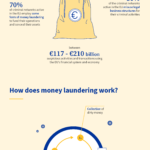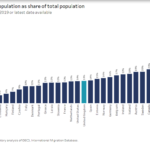Jason Zweig wrote an interesting piece titled “Will Small Investors Ever Warm Up to Stocks Again?” in The Intelligent Investor column of The Wall Street Journal. From the article:
For millions of Americans, spare cash is a lot scarcer than it was in the days when unemployment ran at 6% and home-equity loans made houses ring like cash registers. “Those [money managers] who have been buying are looking for the greater fool to take them out, and the greater fool has always been the little guy,” says Charles Biderman, TrimTabs’ chief executive. “But maybe the little guy doesn’t have the money this time to play the greater fool.”
It has been ages since stocks nearly doubled and investors didn’t give a darn. In early 1948—nearly two decades after the Crash of 1929—the Federal Reserve surveyed 3,500 investors nationwide about their attitudes toward stocks. Only 5% were willing to invest in equities, and 62% were opposed. Asked why, 26% said stocks were “not safe” or “a gamble.” Just 4% felt that stocks offered a “satisfactory” return.
Even after stocks had doubled over the preceding five years, the wounds of the Great Crash still hadn’t healed.
It could be a long slog, again, before today’s small investors forgive the market for the pain it inflicted on them. After the 2008-09 bear market and the flash crash of May 6, 2010, when the Dow dropped 583 points in roughly five minutes, “a lot of people have said, ‘Never again,'” says Morningstar analyst Kevin McDevitt.
I think when comparing the small investor’s apathy towards the stocks market in 1930s and 40s and now one has to take into consideration several other factors that Jason did not include in his article. While it took a few decades back then for small investors to be attracted to stocks again, investors today may have no choice but to return to the equity markets since they are the only “game in town” that can earn decent returns compared to other investments. They returned in droves to the market after the dot-com crash.
For example, the 1-year and 5-year returns on bank CDs are a puny 1.03% and 2.27% according to the latest Bankrate data. Similarly U.S. treasury bonds yield 0% and 2.125% on the 1-year and 5-year bonds. These yields are nowhere near what investors expect in order to keep up with price increases of many goods and services. Prices of basic necessities such as food, gasoline, healthcare, banking and others have increased in recent months. At the same time it must be noted that the average wage of U.S. workers in the private sector has been flat to down for many decades.Workers in the public sector have not been affected as much by these increases since they get cost living allowances in addition to higher pay and other luxurious benefits.
Another factor that we need to consider is how people save for retirement. In the 1930s and 1940s the majority of workers were covered by pensions paid by their employers. That is not true today. Most U.S. companies have eliminated the usual pensions and replaced them with defined contribution plans involving 401-K and other retirement vehicles. Hence workers have no other option to save for retirement other to sign up with one of the 401-K and other plans. These plans invest their funds in equities mostly. Though they also have options to invest in bond funds, most of the funds go into equities as companies push equity funds offered by their 401K providers. Small investors may switch to bond funds in the short-term but they will return to equities as the returns become appealing when the market takes off and investors desire above-average returns.



